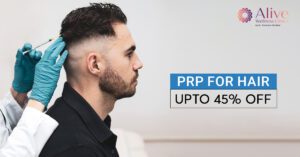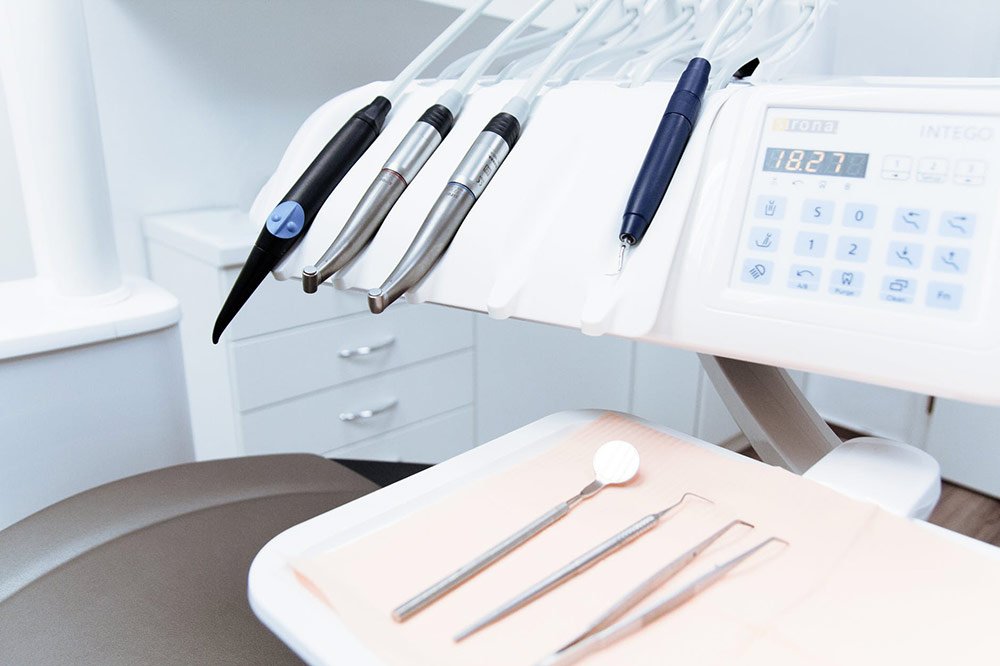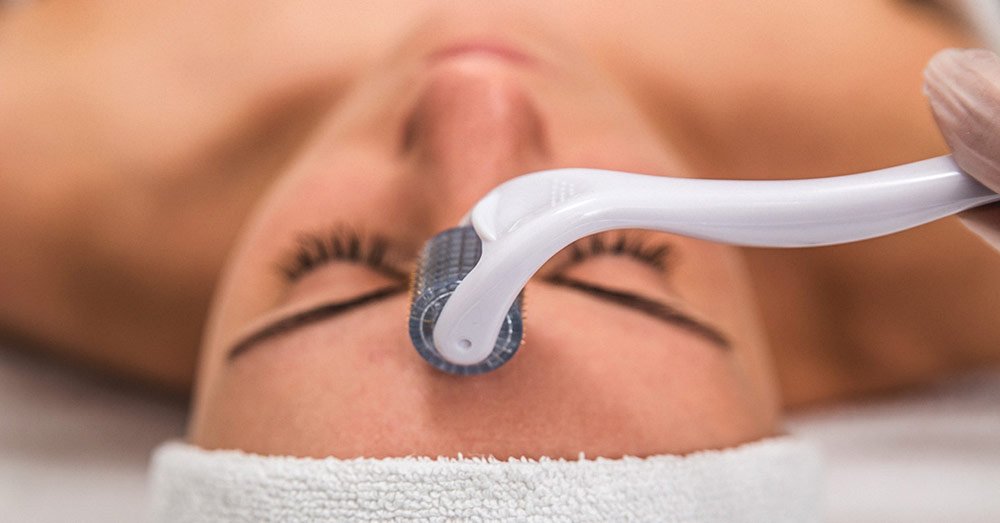Whether it’s the long flowing locks of Rapunzel or the short, lustrous bob of Tarzan, the allure of healthy, shiny hair is lost on no one. We all spend countless hours and tons of money on hair products, spas, haircuts, color treatments, etc. to ensure the good health of our hair. But watching strands of hair falling from the crown can truly put a dampen on our days.
Hair loss can be an incredibly stressful experience. And rightfully so! A thick head of hair is not only a vital part of our beauty regimen but it’s also a symbol of good health. So, it’s pretty understandable to lose your mind when your hair starts falling at a record-breaking speed.
 From billboards to magazines, and newspapers to even pamphlets plastered across the walls of your city, many people claim to offer solutions for hair loss. With so many treatments and medicines available, finding out the best option for reducing hair loss can be overwhelming, and deciding to choose the best fit for you even more difficult. One such treatment option that has become the talk of the town for hair regrowth is PRP or platelet-rich plasma therapy. If you’ve ever researched ways to bring your luscious mane back to life, you must have come across the word ‘PRP’ at least once in your quest. s
But what exactly is PRP and how does it compare to some of the other hair loss treatments available in the market? Come along with us on this journey where we discuss this topic in detail so you can figure out which would be the best option for you to reclaim your crown’s glory.
Platelet-rich Plasma (PRP)
Platelet-rich plasma (PRP) is a treatment used by doctors to accelerate tissue repair. Platelets are a component of blood, along with red and white blood cells. When a person sustains a cut or wound, the platelets are some of the body’s first responders that arrive at the wound site to stop the bleeding and promote healing.
Researchers theorized that if they could extract concentrated platelets and inject them into damaged areas of the body, they could accelerate healing. To produce PRP, a medical professional takes a blood sample from the client and processes it in a machine called a centrifuge. This machine spins at a rapid rate, which separates the components of the blood. The platelets are then extracted from this mixture and used for injection.
From billboards to magazines, and newspapers to even pamphlets plastered across the walls of your city, many people claim to offer solutions for hair loss. With so many treatments and medicines available, finding out the best option for reducing hair loss can be overwhelming, and deciding to choose the best fit for you even more difficult. One such treatment option that has become the talk of the town for hair regrowth is PRP or platelet-rich plasma therapy. If you’ve ever researched ways to bring your luscious mane back to life, you must have come across the word ‘PRP’ at least once in your quest. s
But what exactly is PRP and how does it compare to some of the other hair loss treatments available in the market? Come along with us on this journey where we discuss this topic in detail so you can figure out which would be the best option for you to reclaim your crown’s glory.
Platelet-rich Plasma (PRP)
Platelet-rich plasma (PRP) is a treatment used by doctors to accelerate tissue repair. Platelets are a component of blood, along with red and white blood cells. When a person sustains a cut or wound, the platelets are some of the body’s first responders that arrive at the wound site to stop the bleeding and promote healing.
Researchers theorized that if they could extract concentrated platelets and inject them into damaged areas of the body, they could accelerate healing. To produce PRP, a medical professional takes a blood sample from the client and processes it in a machine called a centrifuge. This machine spins at a rapid rate, which separates the components of the blood. The platelets are then extracted from this mixture and used for injection.
 PRP contains a range of growth factors and proteins that accelerate tissue repair and is usually used to help regrow hair by reversing the process that occurs in androgenetic alopecia – a form of permanent hair loss seen in both men and women.
PRP vs Stem Cell Therapy
Stem cells are the building blocks of our body and are instrumental in healing injured and inflamed tissues via substitution. This property of Stem Cells has made Stem Cell therapy quite popular in recent times as a versatile treatment modality. The key differences between PRP and stem cell therapy are:
PRP contains a range of growth factors and proteins that accelerate tissue repair and is usually used to help regrow hair by reversing the process that occurs in androgenetic alopecia – a form of permanent hair loss seen in both men and women.
PRP vs Stem Cell Therapy
Stem cells are the building blocks of our body and are instrumental in healing injured and inflamed tissues via substitution. This property of Stem Cells has made Stem Cell therapy quite popular in recent times as a versatile treatment modality. The key differences between PRP and stem cell therapy are:
 From billboards to magazines, and newspapers to even pamphlets plastered across the walls of your city, many people claim to offer solutions for hair loss. With so many treatments and medicines available, finding out the best option for reducing hair loss can be overwhelming, and deciding to choose the best fit for you even more difficult. One such treatment option that has become the talk of the town for hair regrowth is PRP or platelet-rich plasma therapy. If you’ve ever researched ways to bring your luscious mane back to life, you must have come across the word ‘PRP’ at least once in your quest. s
But what exactly is PRP and how does it compare to some of the other hair loss treatments available in the market? Come along with us on this journey where we discuss this topic in detail so you can figure out which would be the best option for you to reclaim your crown’s glory.
Platelet-rich Plasma (PRP)
Platelet-rich plasma (PRP) is a treatment used by doctors to accelerate tissue repair. Platelets are a component of blood, along with red and white blood cells. When a person sustains a cut or wound, the platelets are some of the body’s first responders that arrive at the wound site to stop the bleeding and promote healing.
Researchers theorized that if they could extract concentrated platelets and inject them into damaged areas of the body, they could accelerate healing. To produce PRP, a medical professional takes a blood sample from the client and processes it in a machine called a centrifuge. This machine spins at a rapid rate, which separates the components of the blood. The platelets are then extracted from this mixture and used for injection.
From billboards to magazines, and newspapers to even pamphlets plastered across the walls of your city, many people claim to offer solutions for hair loss. With so many treatments and medicines available, finding out the best option for reducing hair loss can be overwhelming, and deciding to choose the best fit for you even more difficult. One such treatment option that has become the talk of the town for hair regrowth is PRP or platelet-rich plasma therapy. If you’ve ever researched ways to bring your luscious mane back to life, you must have come across the word ‘PRP’ at least once in your quest. s
But what exactly is PRP and how does it compare to some of the other hair loss treatments available in the market? Come along with us on this journey where we discuss this topic in detail so you can figure out which would be the best option for you to reclaim your crown’s glory.
Platelet-rich Plasma (PRP)
Platelet-rich plasma (PRP) is a treatment used by doctors to accelerate tissue repair. Platelets are a component of blood, along with red and white blood cells. When a person sustains a cut or wound, the platelets are some of the body’s first responders that arrive at the wound site to stop the bleeding and promote healing.
Researchers theorized that if they could extract concentrated platelets and inject them into damaged areas of the body, they could accelerate healing. To produce PRP, a medical professional takes a blood sample from the client and processes it in a machine called a centrifuge. This machine spins at a rapid rate, which separates the components of the blood. The platelets are then extracted from this mixture and used for injection.
 PRP contains a range of growth factors and proteins that accelerate tissue repair and is usually used to help regrow hair by reversing the process that occurs in androgenetic alopecia – a form of permanent hair loss seen in both men and women.
PRP vs Stem Cell Therapy
Stem cells are the building blocks of our body and are instrumental in healing injured and inflamed tissues via substitution. This property of Stem Cells has made Stem Cell therapy quite popular in recent times as a versatile treatment modality. The key differences between PRP and stem cell therapy are:
PRP contains a range of growth factors and proteins that accelerate tissue repair and is usually used to help regrow hair by reversing the process that occurs in androgenetic alopecia – a form of permanent hair loss seen in both men and women.
PRP vs Stem Cell Therapy
Stem cells are the building blocks of our body and are instrumental in healing injured and inflamed tissues via substitution. This property of Stem Cells has made Stem Cell therapy quite popular in recent times as a versatile treatment modality. The key differences between PRP and stem cell therapy are:
- The platelet-rich plasma used in PRP treatment originates from the patient’s blood sample. While stem cells are derivatives obtained from unviable embryos and foeti produced in labs from mice hair and green apples.
- As PRP treatment makes use of the client’s platelets and plasma, there is no significant compatibility issue with the body. That is not the case with stem cell therapy as the risk of rejection of sample is relatively higher as compared to PRP.
- PRP therapy involves injecting platelets almost immediately after the centrifugation process which makes the concentration of live platelets in the mix pretty optimal. The time lapse between extraction, transportation, and insertion of stem cells may compromise the quality of growth factors and undermine the results of stem cell therapy.
- Fibrins are insoluble proteins that form during the clotting of blood. They are a component of blood plasma and help in healing wounds along with the platelets.
- Dermatologists combine and concentrate a more activated form of centrifuged platelets into a fibrin matrix while performing PRFM. It induces the multiplication of cells and tissue regeneration. This leads to a drastic reduction in the hair loss condition. Both PRP and PRFM treatments are equally effective in giving visible hair growth results after 4-6 sessions.
- PRP uses centrifuged and activated blood platelets drawn from the patient’s arm to induce growth factors in the scalp. It helps to reduce hair loss and stimulate hair regrowth. Laser therapy uses light of a defined wavelength to target the affected areas of the scalp and improve blood circulation to decrease hair loss.
- Lasers work by reducing inflammation and improving the supply of energy to hair cells. PRP, on the other hand, stimulates dormant hair cells by supplying various growth factors to promote hair multiplication.
- When compared, both treatments address hair loss problems by increasing the level of blood flow to the scalp. However, when it comes to efficacy, PRP is known to show faster and better results.
- PRP is a minimally invasive treatment that might involve the use of local anesthesia at most. Meanwhile, a hair transplant is a complex surgical procedure that involves incisions.
- In hair transplantation, there is a high probability that your scalp skin might reject the hair graft. The success of hair transplants remains unpredictable. In PRP, the use of analogous platelets minimizes the risk of rejection.
- The results offered by these two treatments are quite different. Hair transplantation is the only treatment option for bald spots where there is no scope for hair growth. Meanwhile, PRP helps stimulate dormant hair follicles and treats the issue of hair thinning. It helps improve the scalp coverage by boosting the hair volume and density. PRP can help optimize the results of a hair transplant treatment when used simultaneously.
- There is more research available on the safety and efficacy of PRP than Mesotherapy. Though mesotherapy has been around since 1970, there is still insufficient scientific data available for its potency. This is why leading dermatologists consider PRP to be a lot more effective than mesotherapy when it comes to tackling hair loss.
- PRP is less time-consuming and relatively more affordable than mesotherapy.
- PRP is extremely safe with minimal to no side effects as it uses the platelets derived from the client in the procedure. On the flip side, mesotherapy uses customized injections containing various ingredients that may cause some side effects after the treatment.



